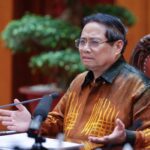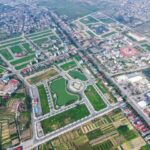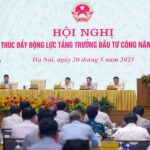Are there localization commitments?
The proposal for VinSpeed, a private company, to invest in the high-speed North-South railway project has attracted significant public and expert attention.
Speaking to the press at the National Assembly, Mr. Hoang Van Cuong, National Assembly deputy for Hanoi and former vice-principal of the National Economics University, expressed his support for this policy. He also emphasized the core requirements for allowing private enterprises to implement this important national infrastructure project.
However, the deputy emphasized that since this is a key project and the “backbone” infrastructure of the nation, even if private enterprises invest, they must still comply with state requirements and regulations. “These important national projects, no matter what form they take, are based on the principles of state management,” said the Hanoi delegate.
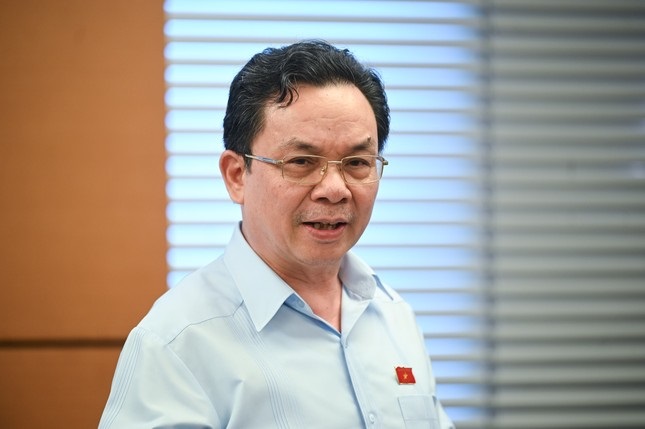
National Assembly Deputy Hoang Van Cuong. Photo: NA
|
According to Mr. Hoang Van Cuong, the most important issue is to ensure that the investor is truly domestic and does not import foreign products or components for assembly and processing. “This will not achieve the goal,” Mr. Cuong said.
“We need to pay attention to whether the investor commits to localization, and whether they will link with other domestic businesses and investors to produce components, accessories, and equipment based on foreign technology,” he added. “This is the most important goal and condition when considering whether to accept the domestic investor,” the deputy advised.
Another important issue that is attracting a lot of attention is VinSpeed’s proposal to borrow 80% of the capital from the state at a zero-interest rate for 35 years to implement the project. Is this feasible?
Mr. Hoang Van Cuong analyzed that, usually, investing in transport infrastructure, including railways, the ability to recoup the initial investment is very slow, and the main recoupment comes from the spillover effects, creating development and bringing benefits to society. Direct revenue from the project is almost difficult.
“When private investors are willing to invest, they also need to consider options to ensure that the state has policies to create resources for investors,” said Mr. Cuong.
Control the money flow
In the case that the investor wishes to borrow from the state instead of receiving a direct order, Mr. Hoang Van Cuong evaluated that “this is also a good option.” According to Mr. Cuong, this money is not given away without recovery, but the recovery time for infrastructure projects is always very long, and the profit is very low.
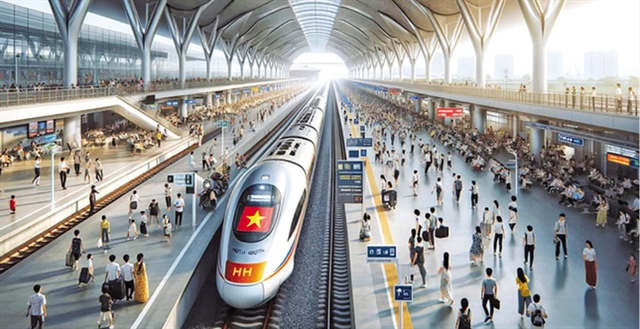
Perspective of the high-speed North-South railway. |
Along with that, he also noted that in public investment, when investing money, it is necessary to control whether the money is going to the right project. Lending to private investors also requires controlling whether the money flow goes into the desired projects. Not just giving money and then using it for other purposes.
If public investment must be controlled down to each expense, complying with supervision, bidding, and setting cost standards for each purchase of materials and raw materials.
“With private investors, they self-manage and decide on this matter. The state only manages the overall to see if the product or project meets the requirements, standards, and regulations set,” said Mr. Hoang Van Cuong.
The Hanoi delegate added that private investors who wish to borrow with less money are temporarily not a burden on the state but a loan to the business, which they will later repay. Financially speaking, this option is more efficient for the budget rather than detrimental.
“This is just the state’s support to help private enterprises do the state’s work. The state should invest, but if there is a private enterprise willing to take on this task, it should be encouraged,” said the Hanoi deputy.
Luân Dũng
– 05:37 22/05/2025
“Prime Minister: Developing a Digital Currency Strategy Tailored to Vietnam’s Needs”
“The development of an international financial center is key to unlocking the country’s growth potential, according to the Head of Government. By establishing a robust financial hub, we can attract global investment, foster innovation, and create a thriving economy that benefits all.”
“Hai Duong Real Estate Surges Post-Merger: Unlocking Inter-Regional Infrastructure Opportunities.”
The proposed merger of Hai Duong and Hai Phong into a centrally-administered city is a game-changer in terms of governance and urban development. This move not only revolutionizes the administrative model but also unlocks vast potential for the region’s real estate market, setting the stage for a vibrant and prosperous future.
“Prime Minister Kicks Off Construction of Tu Lien Bridge in Hanoi: Targeting a 24-Month Completion Timeline”
On the morning of May 19th, Prime Minister Pham Minh Chinh attended the groundbreaking ceremony for the Tu Lien Bridge and road construction project in Hanoi. With a total investment of nearly VND 20,000 billion, the project includes the construction of the Tu Lien Bridge and the road leading to it, connecting the Nghi Tam and Truong Sa intersections.
The Most Scenic Coastal Road in the South: A Two-Year Transformation
After almost 2 years of construction, the 77-km-long coastal road connecting Vung Tau and Binh Thuan is swiftly approaching completion, with several road segments and overpass structures already finished.


